HOW PLANTS WORK: Tomatoes worth their salt.
One substance that is not in short supply on
this planet is salt. Two-thirds of the world is covered in salty water and
there are vast deposits on land. This is a big problem because plants can’t
grow where it’s too salty – they can’t absorb water efficiently.
The Romans knew this; they would ruin the farmland of their enemies by ploughing salt into the soil. A solution to the salt problem would seem to be to irrigate, because the extra water would dilute the salt, right? Wrong. Often, the extra water raises the salt table, bringing underground reserves to the surface and making matters worse. It has been estimated that about a third of the world’s agricultural land is infertile or sub-fertile because of salt.
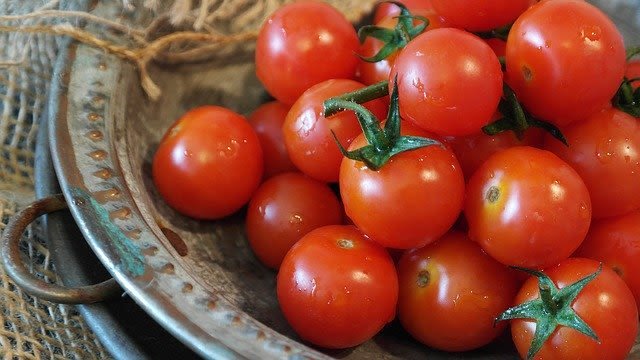
Tomatoes. Image by RitaE from Pixabay
There are plants that are able to grow in salty conditions, but these are not crop plants. Even if they were, they would taste too salty. However, researchers at the University of California have isolated some genes that give a type of wild mustard, Arabidopsis, its salt tolerance. They have been able to put the gene into tomato plants to produce a new variety that absorbs salt but then transports it to the leaves, leaving the all-important fruit tasting normal. Not only will this plant grow in salty areas, but it can be used to gradually reduce the salt in the soils. It is also a possibility that the crop would grow when irrigated with seawater – a big bonus in areas where freshwater is in short supply.
This is just one example of the potential of genetic engineering to help feed the world. There are many ‘tolerance genes’ that could, in theory, make crop plants easier to grow in poor climates and soils. As with all examples of genetic engineering, there are many tests that need to be done before this plant can be widely grown but, in time, the positive aspects of this technology will outweigh the drawbacks.
SO, WHAT IS A PLANT?
There is a tendency to think that anything that photosynthesizes is a plant, but this is not true. Three types of organism can photosynthesize and two of them are definitely not plants. The first are bacteria – the cyanobacteria – which are prokaryotes. They were probably the first photosynthetic organisms on Earth. The other group consists of the algae, including seaweeds. In the modern taxonomic system, algae are classified as protoctistans; they are cukaryotes but are not ‘true’ plants.
’Proper’ plants, or to use the technical term, higher plants are defined as ‘multicellular photosynthetic eukaryotes’ and include mosses, ferns, conifers and flowering plants.
All flowering plants:
- develop from embryos protected by the tissues of the parent plant;
- have starch as their main storage compound;
- have cell walls made from cellulose:
- have life cycles that feature alternation of generations
In this post, I will look at the basic structure and function of the flowering plant, focusing on its transport system. First, I will look at the plant’s relationship with water, then at the transport of organic molecules, and finally at the ways in which plants have become adapted to harsh environments.
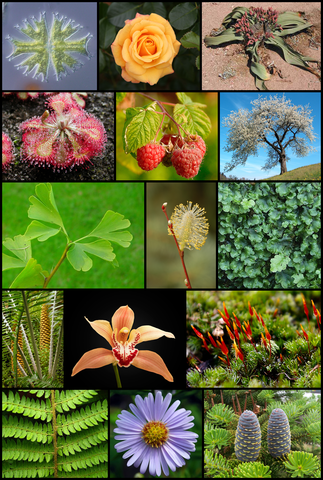
THE LIFE OF PLANTS
Plants can make their own food, so are fundamentally different from animals that have to find it ready-made. Plants have no need for muscles, complex sense organs or a movable skeleton. They don’t need a mouth or intestines, and they have no need to live their lives on our time scale at all. Yet despite these differences, plants are trying to achieve exactly the same goals as other organisms: to feed and grow, without being eaten, long enough to pass their genes on to the next generation. Make no mistake, there is drama in the plant world: sex, death, deception and chemical warfare to name but a few. It’s all happening, but it’s usually very, very slow.
Higher plants evolved from algae, organisms that live their entire life in water. The first land plants relied heavily on water and could only thrive and reproduce in very wet environments. In evolutionary terms, the flowering plants that dominate our planet are relative newcomers and have evolved in close association with insects. As you study the biology of the flowering plant, think about the ways in which the 230 000 or so known species have overcome the problems of living on land. Consider the following:
- Compared with water, air offers very little in the way of support. How do plants support themselves without a bony skeleton?
- The structure of the leaf results in plants losing a lot of water. A mature oak tree can lose over 3000 litres (or 600 gallons; about 20 bathtubs full) on a summer’s day. How does a plant replace all this water?
- Some trees are over 100 metres tall – how does water get to the top of tall trees?
- Plants make food in their leaves, but the food is needed in the roots, growing points, flowers, seeds and fruits. How does food get around a plant – which unlike an animal has no blood and no heart to pump it?
Flowering plants are vascular plants; they have a transport system. The veins that you can see in leaves and stems are specialized tissues called xylem and phloem that transport substances around the plant. Vascular tissue is conducting tissue; ‘tubes’. In animals, vascular tissue refers to blood vessels. In higher plants, it refers to xylem and phloem.
Make sure that you can tell the difference between a section through a root and one through the stem. Remember that in the root there is one central vascular bundle, and in most cases the xylem tissue forms an X shape in the centre – a rare example of a tissue labeling itself. In the stem, there are separate vascular bundles. You should also be able to label the different tissues and state their function.
THE STRUCTURE OF A FLOWERING PLANT
Flowering plants, scientifically known as the angiosperms, can be further divided into two classes: the monocotyledons (monocots for short) and the dicotyledons (dicots). In this article, we look at the dicots – the largest group of flowering plants. Most dicots are land plants and have specialised structures such as leaves, flowers, fruits and seeds, all supported by a stem.
Generally, the stems of small plants are supported by the turgor of their tissues, and the xylem tissue also provides some support. When water is in short supply the turgor is lost and the plant wilts. These are known as herbaceous plants and they tend to have short life cycles – usually only a few years at most. However, turgor cannot support plants over about 1 m tall. Larger plants have developed the supporting tissue we know as wood, which is basically layer upon layer of reinforced xylem that is no longer in use. Trees and shrubs tend to have longer life cycles and survive for many years, sometimes for centuries or even longer. Some trees are hundreds of years old.
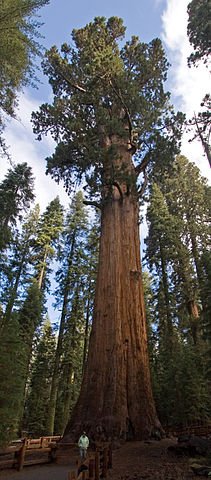
Some of the largest trees ever recorded were giant eucalyptus in the rainforests of Victoria, Australia. The largest one ever measured was 130 metres (435 feet), ironically measured when it was lying on the ground. These trees were some 30 metres (100 feet) taller than the current record holders, the Californian redwoods.
In contrast, there are fewer species of monocots, but in terms of food production they are massively important. The grasses, including rice, wheat and maize, are all monocots. The most obvious distinguishing feature is that monocots have parallel veins in their leaves (think of a blade of grass), while dicots have net-veined leaves.
THE ROOTS
The functions of the root system are to absorb water and minerals, provide the plants with anchorage and support, and often to store food reserves. Roots can also be organs of perennation – survival from one year to the next – and of reproduction. Generally, dicots have a taproot system consisting of one large central deep root and several lateral secondary roots.
THE TISSUES OF A ROOT
In the basic structure of a young dicot root, the following tissues are of central importance:
- Epidermis – literally, the ‘outer skin’. Root hairs are elongated epidermal cells that project into the soil. Root hairs greatly increase the surface area of the root, allowing it to absorb more water and minerale
- Cortex – A layer of parenchyma (general ‘packing tissue”) between the epidermis and the vascular tissue.
- Endodermis – the ‘inner skin’; a thin layer of cells that surrounds the vascular (conducting) tissue. The endodermis contains a waterproof casparian strip that allows the plant to control the movement of ions into the xylem.
- Xylem tissue consists of many dead, hollow vessels that carry water and dissolved mineral ions up the plant to the leaves and other organs.
- Phloem – tissue consisting of mainly of tubular living cells that carry dissolved organic materials, e.g. sucrose, around the plant.
- Cambium – a third type of tissue in the vascular bundle, usually occuring between the xylem and the phloem. Cambium cells are capable of dividing to make new xylem to the inside and new phloem cells to the outside.
- Vascular bundle – a term sometimes used to describe the ‘veins’ in a plant that consist of xylem, phloem and cambium.
So, how do the roots absorb water and minerals ions?
Roots absorb water from the soil by osmosis. To increase the surface area for absorption, the epidermal cells grow projections called root hairs that push their way between the soil particles. Throughout its journey from the soil, through the roots, up the plant and out into the atmosphere, water travels down a water potential gradient.
Mineral ions dissolved in soil water are absorbed across the membranes of the root hairs by a combination of facilitated diffusion and active transport.
Water potential is measured on a negative scale. Dilute or ‘weak’ solutions have a high water potential, the highest water potential (a value of zero) being that of pure water. The more concentrated the solution, the lower the water potential. Water always moves from a high water potential to a lower one, just like heat moves from regions of high temperature to colder ones.
Research has shown that plants absorb some mineral ions by a proton pump. The root cells use ATP to secrete hydrogen ions into the soil. This results in a slight negative charge inside the root cell that aids the absorption of positive ions such as sodium and potassium. Negative ions such as chloride are absorbed by a symport mechanism in which the protons, at higher concentration in the soil, difiuse back into the root cell. The hydrogen ions and the chloride ions are absorbed by the same proton at the same time, hence the name ‘symport’.
Once absorbed, the ions lower the water potential of the cell cytoplasm, so water passes into the root hairs from the soil by osmosis. The pathway is taken by water from soil, through the root tissue (the cortex) to the xylem in the centre. There are two different pathways that water can take:
- through the cytoplasm of cells – the symplast pathway:
- between the cells – through the cell walls and spaces around cells – the apoplast pathway. There is less resistance to the flow of water through this route.
The key difference between the two routes is that the symplast pathway involves living tissue while the apoplast route is non-living; it involves the spaces between the living cells. Before water and minerals can pass into the xylem, they must pass through the endodermis, which is a thin membrane surrounding the xylem. A waterproof layer – the Casparian strip – fills all the gaps between the endodermal cells. This is made from a waxy, waterproof material called suberin. The Casparian prevents water and ions from entering the xylem via the apoplast pathway. This is significant because, with the symplast pathway, water and ions must pass through living material and membranes. Thus the plant has a degree of control over what passes into the xylem. It seems that without the Casparian strip the plant would act as a wick, drawing up large amounts of water and mineral ions from the soil to the leaves. As the water evaporated, the ion concentration would increase and could build to the point where it damaged the leaf tissue.
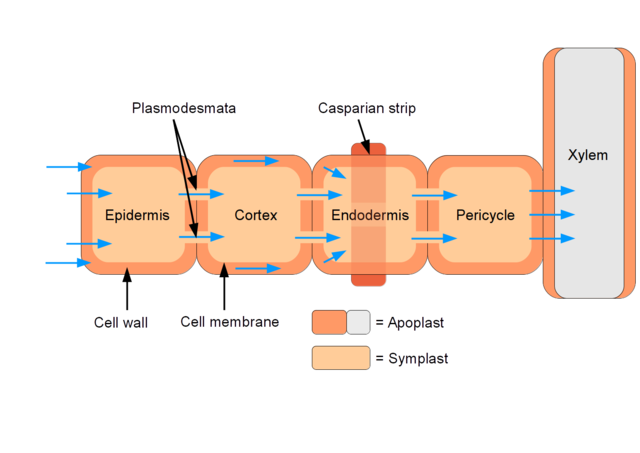
WHAT MINERALS DO PLANTS NEED?
A wide variety of dead organic matter accumulates in soil from leaves, faeces, urine, the bodies of animals and so on. The action of decomposers – bacteria and fungi – on this organic matter releases mineral ions into the soil. Many of these are essential to plants, either as components of compounds or as participants in chemical reactions. Some vital minerals are shown in the table below. This ‘mush’ of dead organic matter and decomposers is called humus on vital component of soil.
It is relatively easy to investigate which minerals are essential to a particular plant species. A batch of seedlings is grown in a solution containing all known nutrients and then transferred to a solution lacking in one particular nutrient. If growth continues as normal, the nutrient can be assumed to be non-essential. However, if growth is abnormal in some way, the nutrient is assumed to be essential. A common symptom of deficiency is a yellowing of the leaves called chlorosis.
A table showing some vital plant minerals obtained from the soil
| Mineral ion | Form absorbed by plant | Needed for | Symptoms of deficiency |
(Macronutrients) Nitrate | (NO3-) | making amino acids (and proteins) and nucleic acids | generally poor growth; old leaves turn yellow (chlorosis) and die prematurely |
| Potassium | K+ | enzyme activation, water balance, ion balance | mature leaves have dead edges |
| Phosphate | PO43- | an essential component of ATP, DNA and some proteins | generally stunted growth, especially roots, plant may turn dark green |
| Magnesium | Mg2+ | a central component of chlorophyll | chlorosis |
| Calcium | Ca2+ | affects the cytoskeleton, membrane proteins and many enzymes | growing points (meristems) die, young leaves yellow |
| Sulphur | SO42- | Part of some proteins and coenzymes | chlorosis |
| Micronutrients | |||
| Iron | Fe3+ | vital part of active site of many enzymes, electron carriers in respiratory chain, needed for chlorophyll synthesis | chlorosis; young leaves may be white with green veins |
| Chlorine | CI- | photosynthesis, ion balance | |
| Manganese | Mn2+ | enzyme activation | young leaves pale with dead patches |
| Zinc | Zn2+ | enzyme activation, auxin synthesis | mature leaves have many dead spots |
| Copper | Cu2+ | active site of many enzymes and electron carriers | shoots fail to develop |
| Molybdenum | MoO43+ | nitrogen fixation | slow growth |
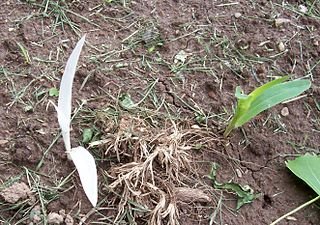
A corn plant with severe chlorosis (left) beside a normal plant (right). :Royalbroil, CC BY-SA 2.5
A vital nutrient for all plants is nitrogen. Although this element is abundant as a gas – N2 forms about 78 per cent of the atmosphere – it is in an inert form that cannot generally be used by plants. Nitrogen-fixing bacteria can turn nitrogen gas into soluble nitrate (NO3-). These bacteria live free in the soil but some plants – the legumes – have developed root nodules that contain nitrogen-fixing bacteria.
REFERENCES
Salt concentration in tomato fruit.
https://healthyeating.sfgate.com/much-salt-tomato-4878.html
https://www.howplantswork.com/
https://edis.ifas.ufl.edu/pdffiles/4h/4H36000.pdf
https://en.wikipedia.org/wiki/Plant
http://leavingbio.net/structure-functions-flowers/
http://leavingbio.net/structure-flowering-plants/
https://en.wikipedia.org/wiki/Sequoia_sempervirens
https://www.smart-fertilizer.com/articles/plant-nutrients/
https://en.wikipedia.org/wiki/Plant_nutrition
Essential nutrients for healthy plants
https://en.wikipedia.org/wiki/Absorption_of_water
https://www.bbc.co.uk/bitesize/guides/z37fmsg/revision/1#:~:text=Plants%20absorb%20water%20from%20the,increase%20the%20rate%20of%20absorption.
https://www2.estrellamountain.edu/faculty/farabee/biobk/BioBookPLANTANAT.html
He said, 'Stop doing wrong things and turn back to God! The kingdom of heaven is almost here.'(Matthew 3:2)
Question from the Bible, What is a Proof of God's Existence
Watch the Video below to know the Answer...
(Sorry for sending this comment. We are not looking for our self profit, our intentions is to preach the words of God in any means possible.)
Comment what you understand of our Youtube Video to receive our full votes. We have 30,000 #SteemPower. It's our little way to Thank you, our beloved friend.
Check our Discord Chat
Join our Official Community: https://steemit.com/created/hive-182074
This post has been voted on by the SteemSTEM curation team and voting trail. It is elligible for support from @curie and @minnowbooster.
If you appreciate the work we are doing, then consider supporting our witness @stem.witness. Additional witness support to the curie witness would be appreciated as well.
For additional information please join us on the SteemSTEM discord and to get to know the rest of the community!
Thanks for having used the steemstem.io app. This granted you a stronger support from SteemSTEM. Note that including @steemstem in the list of beneficiaries of this post could have yielded an even more important support.